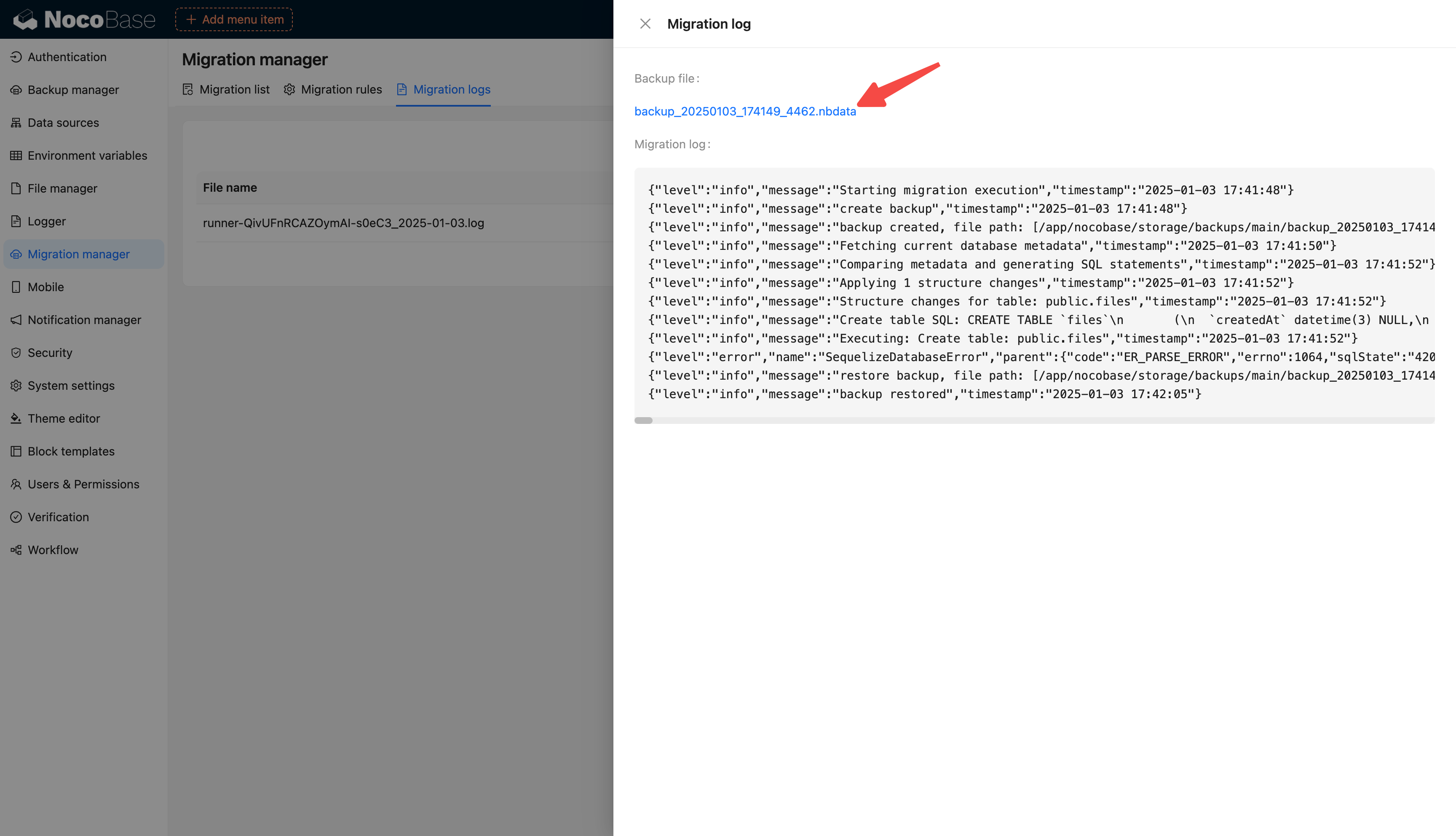Migration Manager
Introduction
The Migration Manager helps you transfer application configurations from one environment to another. Its main focus is on migrating “application configurations.” If you need a complete data migration, we recommend using the “Backup Manager” to back up and restore your entire application.
Installation
The Migration Manager depends on the Backup Manager. Make sure that the Backup Manager plugin is already installed and activated.
Process and Principles
The Migration Manager transfers tables and data from the primary database based on specified migration rules, moving them from one application instance to another. Note that it does not migrate data from external databases or sub-applications.

Migration Rules
Built-in Rules
Migration Manager can migrate all tables in the primary database and supports five built-in rules:
-
Schema-only
Only migrates the structure (schema) of tables—no data is inserted or updated. -
Overwrite (clear and re-insert)
Deletes all existing records from the target database table, then inserts the new data. -
Upsert (Insert or update)
Checks whether each record exists (by primary key). If it does, it updates that record; if not, it inserts it. -
Insert-ignore
Inserts new records, but if a record already exists (by primary key), the insertion is ignored (no updates occur). -
Skip
Skips processing for the table entirely (no structure changes, no data migration).
Additional notes:
- "Overwrite," "Upsert," and "Insert-ignore" all synchronize table structure changes as well.
- If a table uses an auto-increment ID as its primary key, or if it has no primary key, neither "Upsert" nor "Insert-ignore" can be applied.
- "Upsert" and "Insert-ignore" rely on the primary key to determine whether the record already exists.
Detailed Design

Configuration Interface
Configure migration rules

Enable independent rules
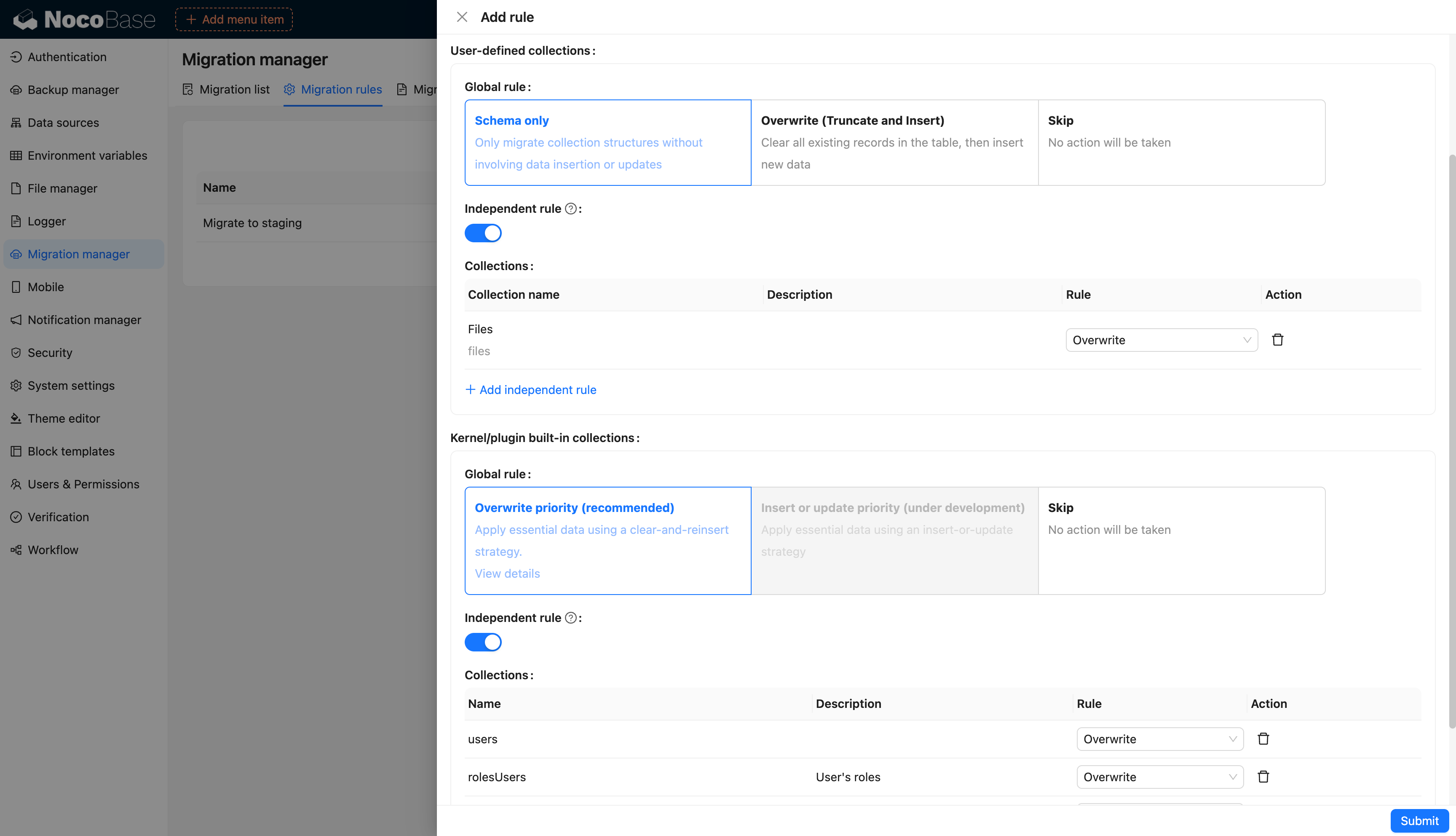
Select independent rules and the tables to be processed by the current independent rules

Migration Files

Creating a New Migration
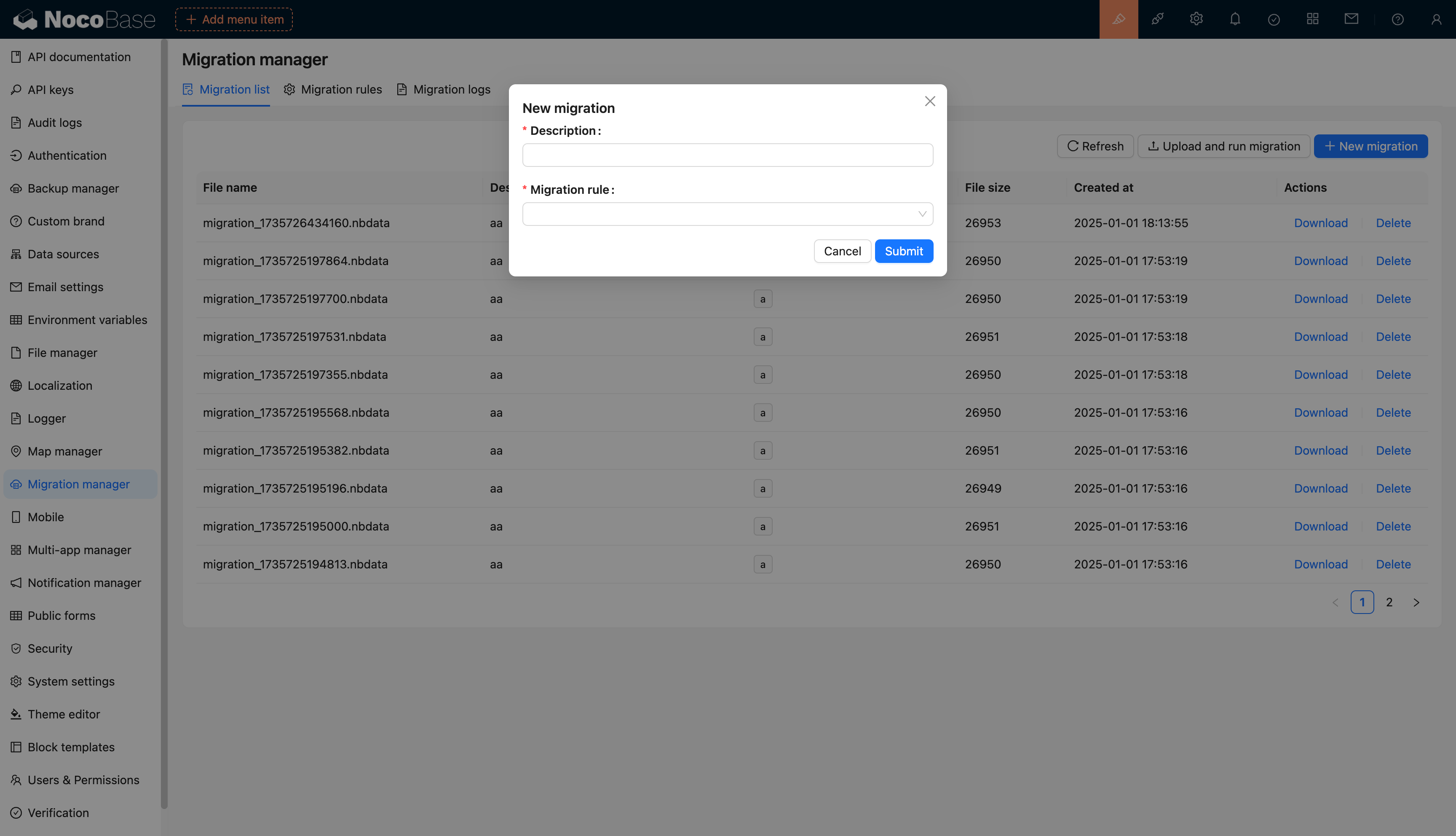
Executing a Migration
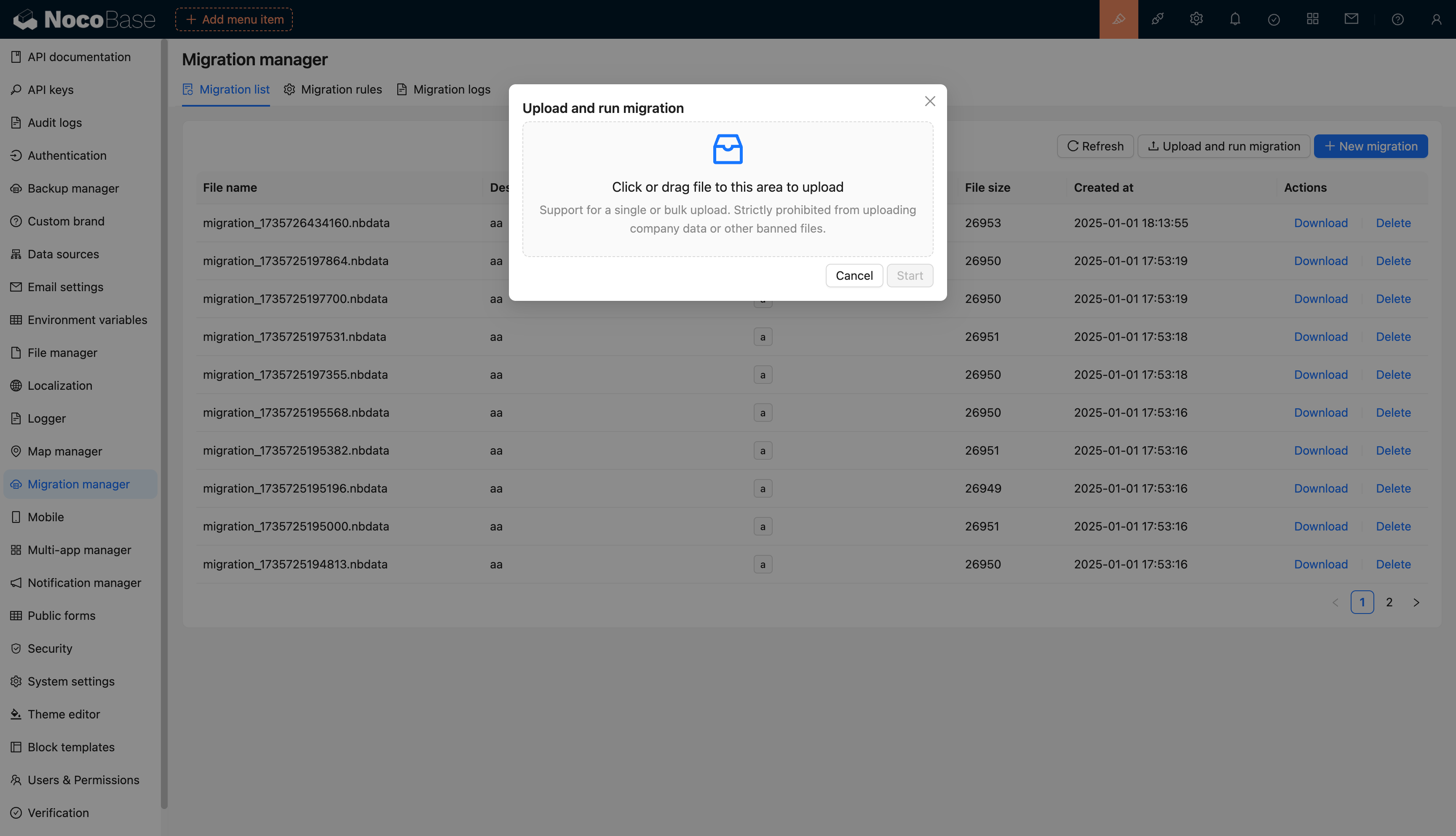
Application environment variable check (learn more about Environment Variables)

If any are missing, a pop-up will prompt the user to enter the required new environment variables here, and then continue
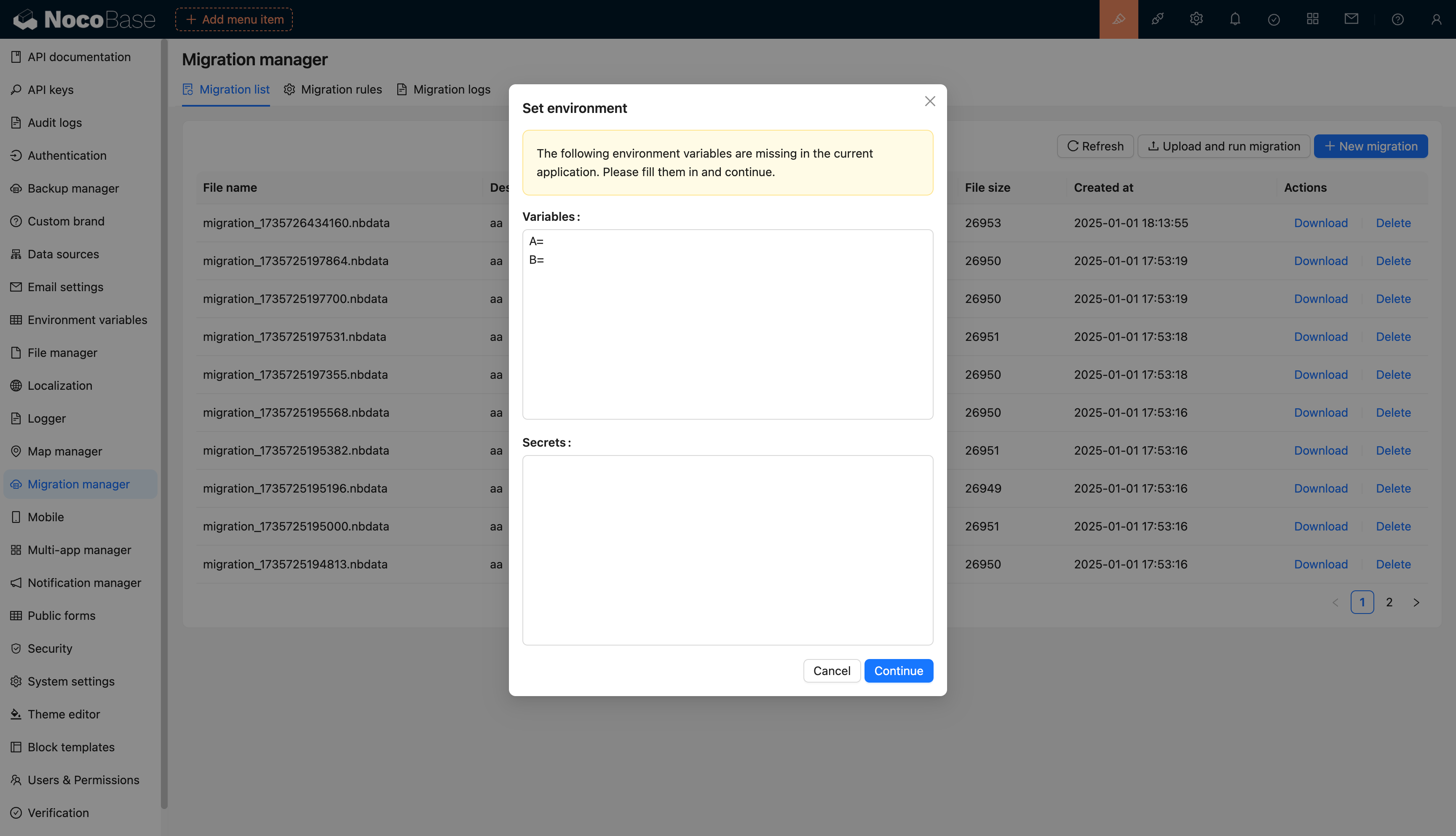
Migration Logs
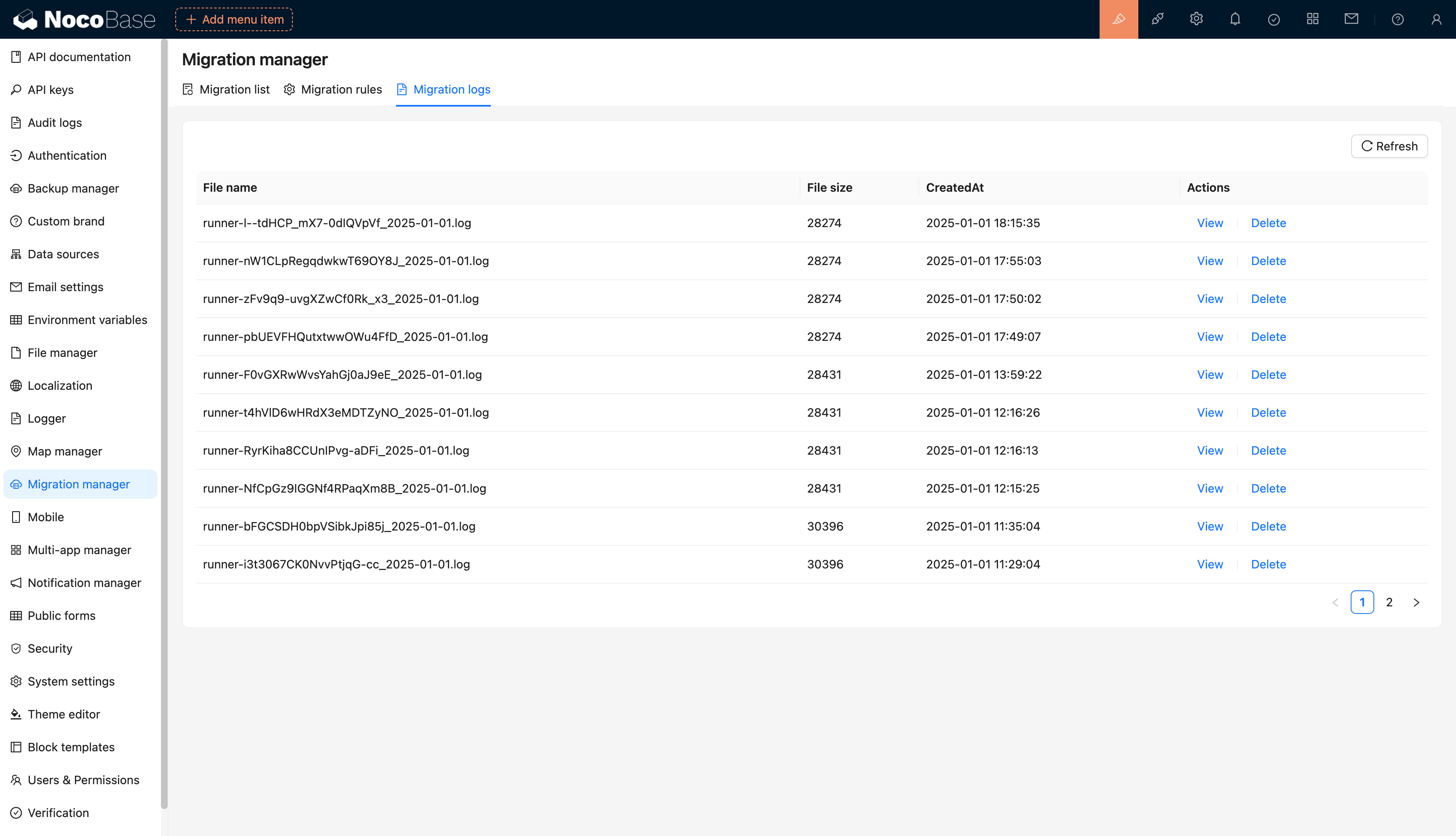
Rollback
Before any migration runs, the current application is automatically backed up. If the migration fails or the results are not as expected, you can roll back using the Backup Manager.
